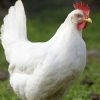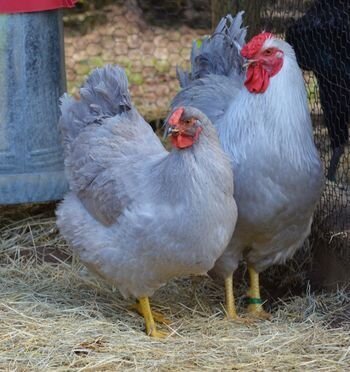Lavender test with blood sample
$55.00
About this test
Lavender (LAV*L) is an autosomal recessive mutation of the chicken (Gallus gallus) affecting the neural crest derived melanocyte. It causes the dilution of both eumelanin and phaeomelanin to a light grey or buff, respectively. Our PCR-RFLP test will indicate if the lavender gene is present in a chicken. Thus, the possible results are:
LAV*N/LAV*N (Normal/Normal, non-lavender carrier)
LAV*N/LAV*L (Normal/Lavender, heterozygous carrier)
LAV*L/ LAV*L (Lavender/Lavender)
Important Disclaimer Regarding Lavender Mutation Identification:
Our genetic test is designed with precision to identify the presence of the lavender mutation in chickens, which is known for imparting a distinct and attractive phenotype. It is crucial for our clients to understand that although the lavender and grey colorations in chickens may present similarly in appearance, our test specifically targets and identifies only the lavender mutation.
This specificity means that while our test can confirm the presence of the lavender mutation, it does not distinguish or identify the grey phenotype. The grey and lavender phenotypes may appear visually similar, but our test’s capability is confined to the detection of the genetic markers associated with the lavender mutation exclusively.
We recognize the importance of this distinction for breeding programs, phenotype classification, and other related endeavors. As such, we encourage our clients to use the results of this test in conjunction with other information and breeding knowledge to make informed decisions.
NOTE:
We recognize the importance of this distinction for breeding programs, phenotype classification, and other related endeavors. As such, we encourage our clients to use the results of this test in conjunction with other information and breeding knowledge to enhance our common knowledge of chicken genetics.
It’s essential to recognize that chicken genetics, while increasingly understood, does not yet offer the same depth of genomic resources and annotations available for more extensively studied organisms like humans or mice. The genomic sequences of chickens, though vastly improved over the years, still contain gaps and areas of uncertainty, making the precise identification of mutations a challenging endeavor. However, the unique genetic makeup of your double lavender-grey animals provides a focused lens through which we can examine these complex genetic interactions, offering a pathway to more accurate and comprehensive genetic mappings for these traits.
In our research, we suggest a close genetic relationship between the lavender and grey mutations. The outcomes we’ve observed support the hypothesis of a single gene with multiple alleles (L, l, lg) controlling these phenotypes, with the “grey” allele (lg) being closely linked to the lavender allele but not detected by our current tests. This close linkage suggests that the mutations are very close to each other on the chromosome, affecting their segregation patterns and the phenotypic ratios in offspring. The presence in your flock of double lavender-grey animals, which consistently exhibit a 100% lavender phenotype alongside heterozygous genetic results, indeed marks a rare and invaluable asset to genetic research within avian species. These individuals stand at the forefront of our efforts to unravel the complex genetic tapestry that dictates color phenotypes in birds, especially those as nuanced as lavender and grey. Serving as a critical tool, these double lavender-grey animals are instrumental in pinpointing the specific mutation responsible for the grey phenotype.
How to collect samples
Please, check our
instructional videos
on how to collect samples



